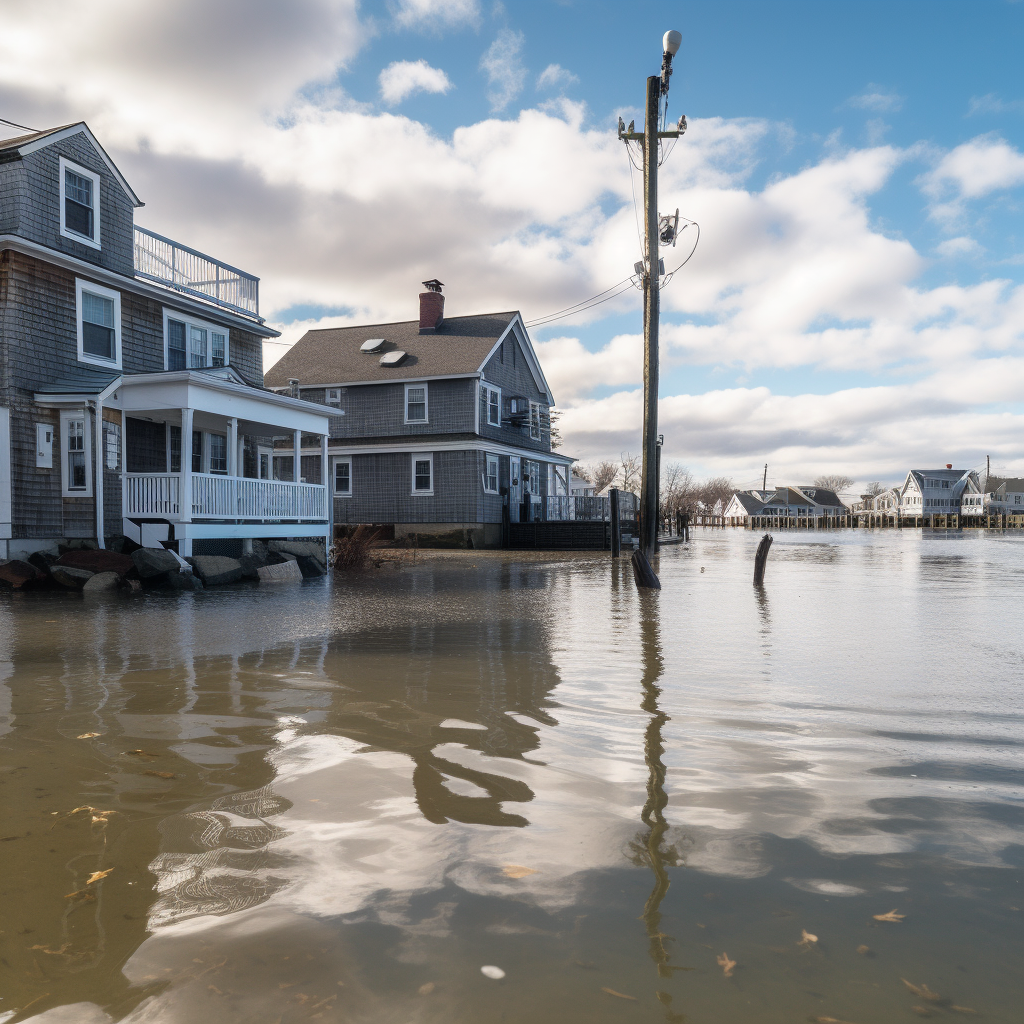Accelerating Sea Level Rise: A Growing Threat To Coastal Cities

Table of Contents
Causes of Accelerating Sea Level Rise
Several interconnected factors contribute to the accelerating rise in sea levels, posing a significant threat to coastal regions globally. Understanding these causes is crucial for developing effective mitigation strategies.
Thermal Expansion
Rising ocean temperatures are a primary driver of sea level rise. As the ocean absorbs heat trapped by greenhouse gases, the water expands, occupying a larger volume. This thermal expansion accounts for a significant portion of the observed sea level increase.
- Global warming and thermal expansion: The relationship is direct; higher global temperatures lead to greater thermal expansion.
- Impact of greenhouse gases: Carbon dioxide, methane, and other greenhouse gases trap heat in the atmosphere, causing a warming effect on the oceans.
- Contribution to sea level rise: Studies show that thermal expansion contributes approximately 30-50% to the overall observed sea level rise.
Melting Glaciers and Ice Sheets
The melting of glaciers and ice sheets in Greenland and Antarctica is another major contributor to rising sea levels. The vast amounts of ice stored in these regions are increasingly melting at an alarming rate due to rising global temperatures.
- Glacial melt and ice sheet instability: Warmer temperatures accelerate the melting of glaciers and destabilize ice sheets, leading to increased ice flow into the ocean.
- Rate of ice loss: Satellite data reveal a dramatic increase in the rate of ice loss from Greenland and Antarctica in recent decades.
- Potential for future acceleration: Scientists predict that the rate of ice melt will likely accelerate in the coming years, further contributing to sea level rise.
Land Subsidence
Land subsidence, the sinking of land, exacerbates the effects of sea level rise. In many coastal areas, the relative sea level rise – the combination of actual sea level rise and land subsidence – is significantly higher than the global average, making these regions particularly vulnerable.
- Groundwater extraction: Excessive pumping of groundwater can cause the land to compact and sink.
- Geological processes: Natural geological processes, such as tectonic plate movements, can also contribute to land subsidence.
- Examples of affected regions: Coastal areas in Southeast Asia, parts of the US Gulf Coast, and Venice, Italy, are experiencing significant land subsidence, making them highly susceptible to flooding.
Consequences of Accelerating Sea Level Rise for Coastal Cities
The consequences of accelerating sea level rise for coastal cities are far-reaching and severe, impacting various aspects of life and infrastructure.
Increased Coastal Flooding
Higher sea levels directly increase the frequency and severity of coastal flooding, particularly during storm surges and high tides. This leads to devastating consequences for coastal communities and economies.
- Economic and social consequences: Flooding disrupts businesses, damages property, displaces residents, and causes significant economic losses.
- Examples of recent devastating floods: Numerous coastal cities have experienced devastating floods in recent years, highlighting the growing threat.
- Impact on infrastructure: Critical infrastructure, including roads, bridges, power grids, and wastewater treatment plants, is vulnerable to damage from flooding.
Coastal Erosion
Rising sea levels accelerate coastal erosion, leading to the loss of beaches, the undermining of coastal infrastructure, and habitat destruction.
- Mechanisms of erosion: Higher sea levels increase wave action and storm surge intensity, accelerating the erosion of coastlines.
- Examples of coastal erosion hotspots: Many coastal regions around the world are experiencing rapid erosion, threatening homes and businesses.
- Impact on ecosystems: Coastal erosion damages vital ecosystems, such as mangroves and salt marshes, which play crucial roles in protecting coastlines and supporting biodiversity.
Saltwater Intrusion
Saltwater intrusion into freshwater aquifers is a significant threat to coastal communities, compromising drinking water supplies and impacting agriculture.
- Consequences of saltwater intrusion: Saltwater intrusion contaminates drinking water sources, making them unfit for human consumption and irrigation.
- Impact on human health and food security: Contaminated water can lead to health problems, while damage to agricultural lands can threaten food security.
- Potential solutions and mitigation strategies: Implementing strategies to protect freshwater resources, including improved water management practices and construction of barriers, is crucial.
Mitigation and Adaptation Strategies
Addressing the threat of accelerating sea level rise requires a multifaceted approach that combines mitigation efforts to slow the rate of sea level rise with adaptation strategies to manage its impacts.
Reducing Greenhouse Gas Emissions
The most crucial step in mitigating sea level rise is to reduce greenhouse gas emissions globally. This requires concerted international cooperation and a transition to cleaner energy sources.
- International agreements (Paris Agreement): International agreements aim to limit global warming and reduce greenhouse gas emissions.
- Renewable energy sources: Transitioning to renewable energy sources like solar, wind, and hydropower is essential to reduce reliance on fossil fuels.
- Carbon capture technologies: Developing and deploying carbon capture technologies can help remove CO2 from the atmosphere.
Coastal Protection Measures
Engineering solutions can help protect coastal areas from flooding and erosion, but these are often costly and may not be sustainable in the long term.
- Seawalls: Seawalls provide physical barriers against waves and storm surges.
- Breakwaters: Breakwaters reduce wave energy, protecting shorelines from erosion.
- Managed retreat: Relocating vulnerable communities and infrastructure away from the coast may be necessary in some areas.
- Nature-based solutions (e.g., mangrove restoration): Restoring natural coastal ecosystems can provide effective and sustainable coastal protection.
Community Planning and Relocation
Long-term planning and, in some cases, managed relocation of vulnerable communities are crucial for adapting to accelerating sea level rise.
- Early warning systems: Implementing early warning systems can help communities prepare for and respond to flooding events.
- Building codes: Enforcing stricter building codes can help ensure that new construction is resilient to flooding and erosion.
- Sustainable urban planning: Sustainable urban planning can help minimize the impacts of sea level rise on coastal communities.
Conclusion
Accelerating sea level rise poses a grave threat to coastal cities worldwide. The causes are multifaceted, ranging from thermal expansion and melting ice sheets to land subsidence. The consequences are devastating, including increased coastal flooding, erosion, and saltwater intrusion. Addressing this challenge requires a combined effort of mitigating greenhouse gas emissions and implementing adaptation strategies. Understanding the threat of accelerating sea level rise is crucial for protecting our coastal cities. Learn more about the issue and take action today!

Featured Posts
-
 Thomas Mueller Tva Klubbar Jagar Bayern Stjaernan
May 11, 2025
Thomas Mueller Tva Klubbar Jagar Bayern Stjaernan
May 11, 2025 -
 Sold Out Tales From The Track How To Win Tickets
May 11, 2025
Sold Out Tales From The Track How To Win Tickets
May 11, 2025 -
 The Forgotten Mtv Comedy Shows Of Alex Winter A Deep Dive
May 11, 2025
The Forgotten Mtv Comedy Shows Of Alex Winter A Deep Dive
May 11, 2025 -
 Celtics Vs Knicks Game Where To Watch The Live Stream
May 11, 2025
Celtics Vs Knicks Game Where To Watch The Live Stream
May 11, 2025 -
 Selena Gomez Denies Wedding First Dance With Benny Blanco
May 11, 2025
Selena Gomez Denies Wedding First Dance With Benny Blanco
May 11, 2025
